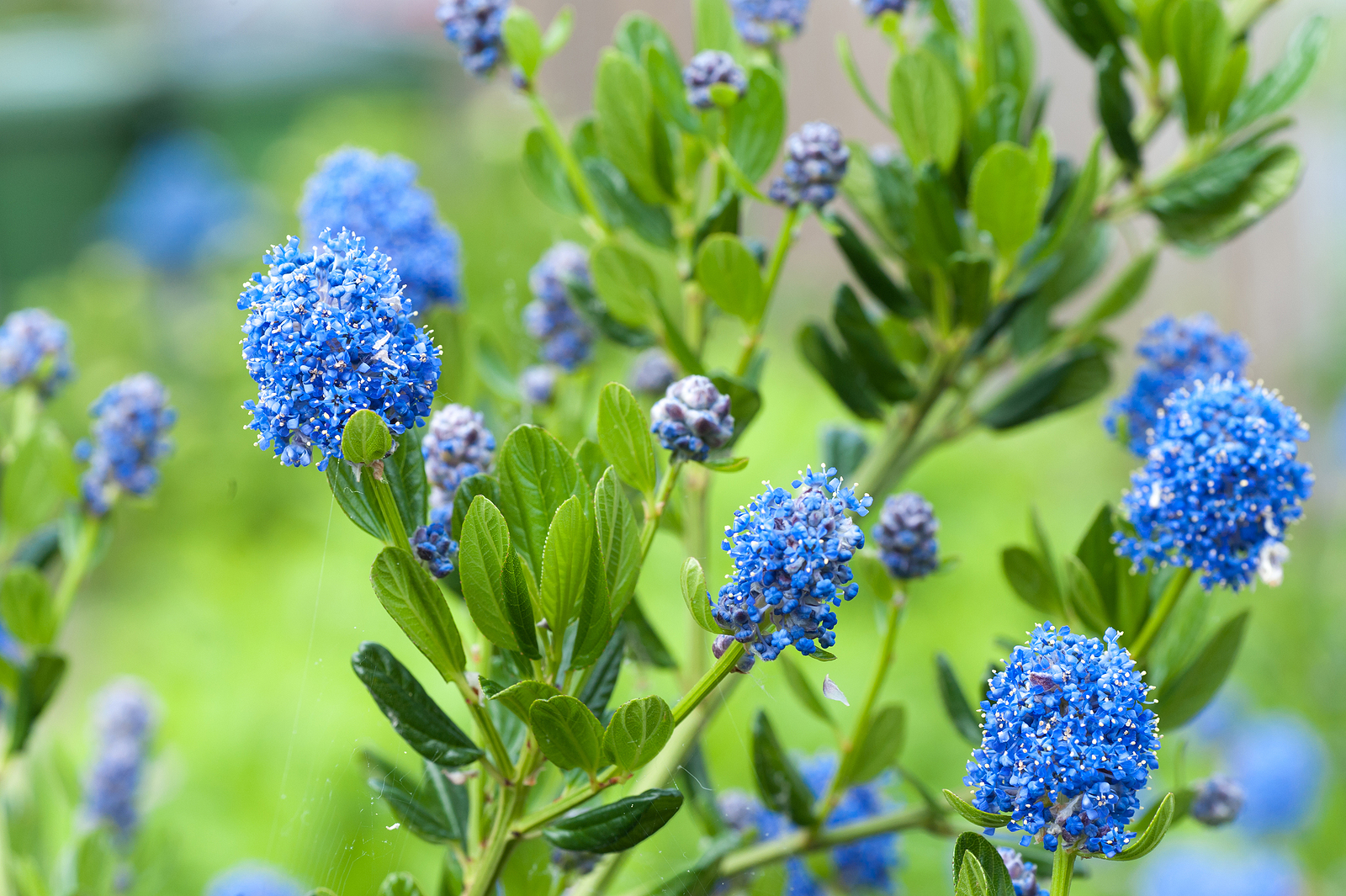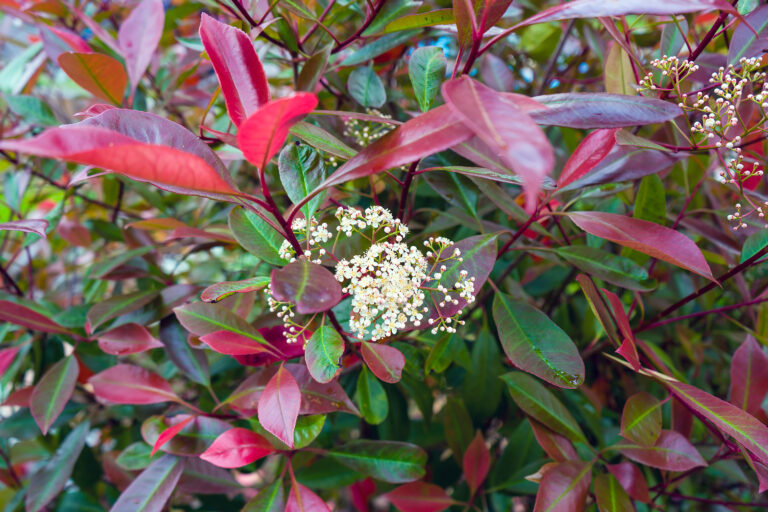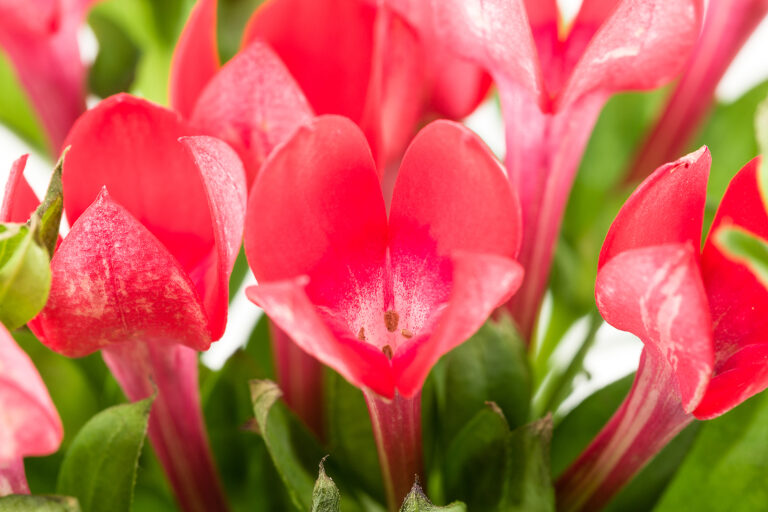How to Grow California Lilac – Ceanothus
Ceanothus, also known as California lilac, is a beautiful shrub that can be grown in a variety of climates and settings.
Ceanothus, commonly known as California lilac, is a genus of of about 50 species of evergreen and deciduous shrubs and small trees native to North America. They are known for their clusters of vibrant blue, white, or pink flowers that bloom in the spring and early summer. The leathery foliage is usually glossy and dark green, adding to the plant’s overall ornamental value.
Ceanothus grows best in well-drained soil and full sun, although they can tolerate some shade. Ceanothus are drought-tolerant once established and are relatively low-maintenance, making them popular choices for gardens and landscapes. Ceanothus plants are commonly found in a variety of habitats, from coastal regions to mountainous areas. They are known for their ability to thrive in poor, rocky soils and are often used in landscaping for their ornamental value and as erosion control plants.
Some species of ceanothus can also attract pollinators such as bees and butterflies with their nectar-rich flowers. In addition to their horticultural value, ceanothus plants are also important as wildlife habitat, providing food and shelter for birds and other animals. Some species are also used for their medicinal properties, as certain parts of the plant have been used in traditional Native American medicine. Overall, ceanothus is a beautiful and versatile plant that can add color and interest to any garden or landscape.
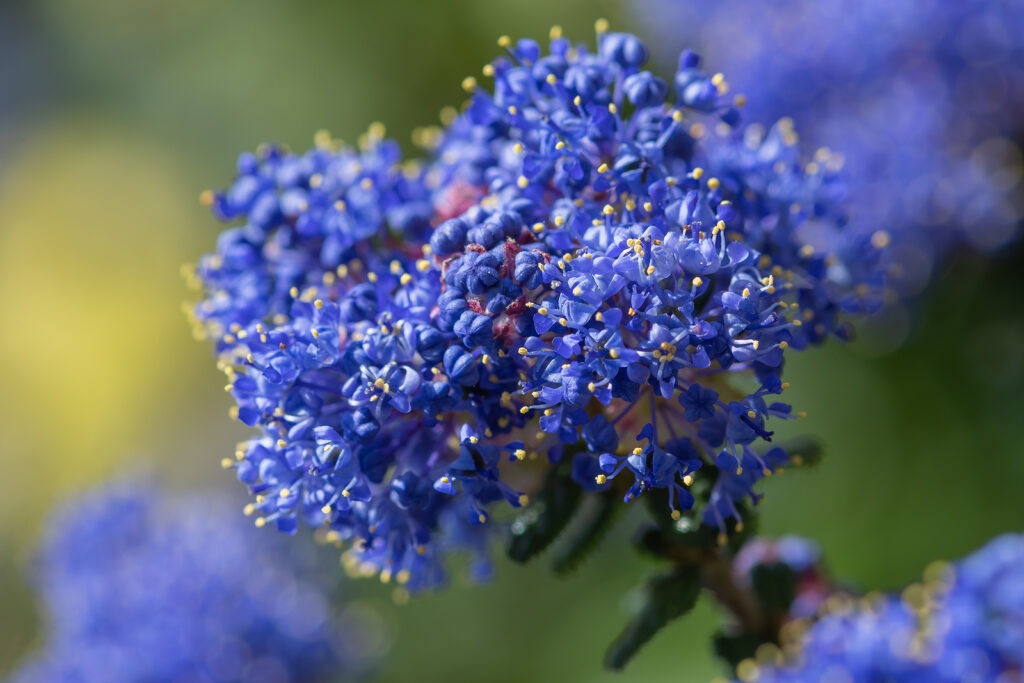
Get to know Ceanothus
- Plant type: Shurb
- Growing zones and range: Zones 4 to 10 depending on the variety
- Hardiness: Hardy
- Height and width: 2 to 6 feet tall and wide or more depending on variety
- Foliage: Leathery, glossy dark green leaves
- Flowers: Clusters of vibrant blue, white, or pink flowers
- Bloom time: Spring and summer
- Uses: Shrub borders, rock gardens, ground cover
- Common name: California lilac
- Botanical name: Ceanothus
- Family name: Rhamnaceae
- Origin: Western United States
Where to plant Ceanothus
- Ceanothus prefers full sun and well-draining soil. Make sure to plant it in a sunny spot with good air circulation.
- Ceanothus is drought-tolerant once established, so make sure to plant it in a spot with good drainage.
- Give Ceanothus some protection from wind and cold.
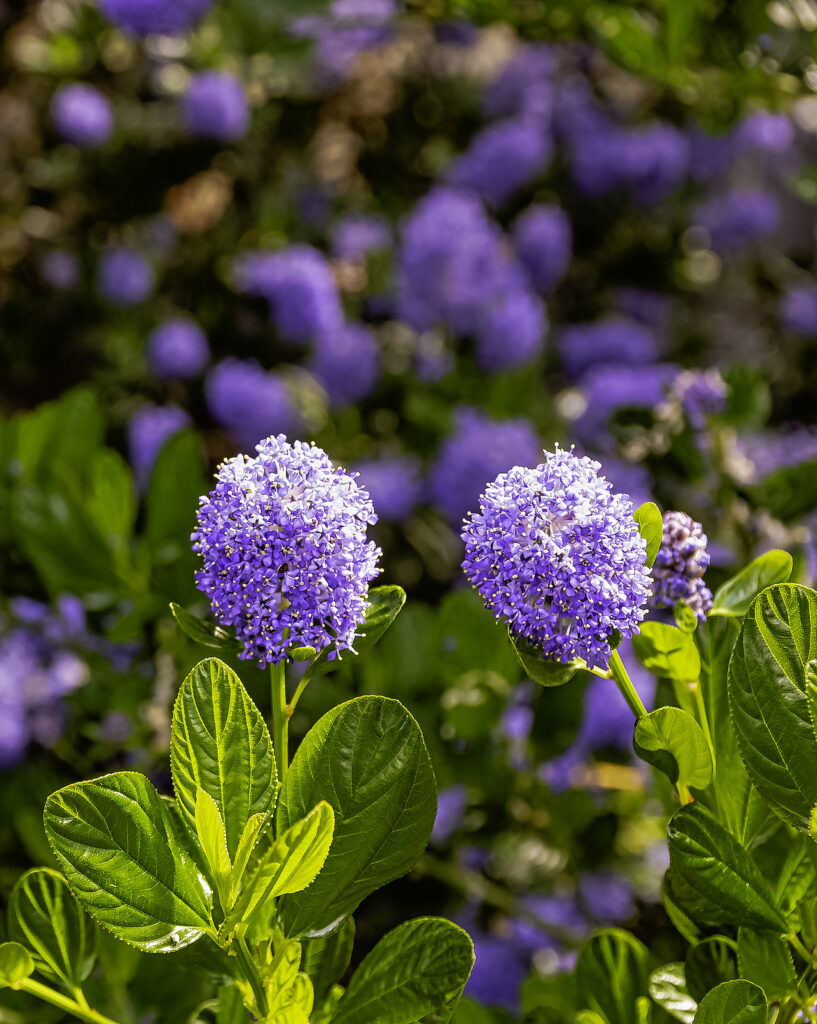
When to plant Ceanothus
- Ceanothus is best planted in the spring or fall, when the soil is still warm but the weather is cooler.
- Avoid planting ceanothus during hot summer months or freezing winter months. Make sure to plant it at least 6 weeks before the first frost date to give it time to establish its roots.
Planting and spacing Ceanothus
- Space Ceanothus 5 to 6 feet apart depending on the variety.
- Plant in well-drained soil. Dig a hole twice the size of the root ball and half again as deep when planting or transplanting container grown plants.
How to water and feed Ceanothus
- Ceanothus is drought-tolerant once established, but it is important to water regularly during the first year after planting to help it establish a strong root system. Water deeply but infrequently to encourage deep root growth.
- Fertilize Ceanothus sparingly: Ceanothus does not require regular fertilizing, but you can apply a slow-release, balanced fertilizer in the spring if needed. A light application of a balanced fertilizer in the spring can help promote healthy growth.
- Ceanothus can thrive in nutrient-poor soil. If you do fertilize, use a balanced fertilizer in the spring.
Ceanothus care
- Ceanothus does not require regular pruning, but you can prune it selectively to shape and control its growth. Pruning will encourage bushier growth. Prune after the plant has finished blooming in the spring or early summer.
- Mulching around the base of Ceanothus can help retain moisture and suppress weeds. Make sure to keep the mulch away from the stems of the plant to prevent rot.
Ceanothus pests and diseases
- Ceanothus is relatively pest and disease-resistant, but keep an eye out for aphids, spider mites, and powdery mildew. Treat any issues promptly to prevent them from spreading.

Ceanothus propagation
- Ceanothus propagation is difficult.
- Take 4 to 6-inch softwood cuttings from new growth in late spring or early summer. Remove the lower leaes and dip the cut end in rooting hormone. Plant the cuttings in a well-draining potting mix and keep the soil just moist until root develop. Hardwood cutting can be taken in late summer or early fall and rooted in the same manner.
- Collect seeds from mature ceanothus berries in fall and sow them in a well-draining seed-starting mix. Germination take several weeks or months.
- Ceanothus can be rooted by layering by covering low-hanging branches with soil. After roots develo[p, sever the branch from the parent plant and transplant it.
Ceanothus varieties to grow
- Ceanothus americanus, called New Jersey tea, grow to 4 feet tall and wide with small white flowers in termimal panicles.
- C. arboreus, Island Ceanothus: grows 15 to 25 feet tall, usually a single trunk. This is the largest growing species.
- C. ‘Concha’ grows 5 to 7 feet tall an 6 to 10 feet wide; dark cobalt blue flowers in right, round clusters. Striking accent plant; flowers mid-spring.
- C. ‘Dark Star’ grow 4 to 6 feet tall and wide; striking cobalt blue flowers appear in early spring; fast growing accent plant.
- C. ‘Frosty Blue’ grows 8 to 10 feet tall and just as wide; medium blue flower with white frosted appearance in showy cluster in early spring.
- C. gloriosus, Point Reyes Ceanothus grow to 24 inches tall and 6 feet wide; showy deep blue to purple flowers in large clusters along branches.
- C. griseus, Carmel ceanothus: medium-size shrub with showy light to medium blue flower in long clusters blooming from late winter to early spring.
- C. griseus var. horizontalis, Carmel creeper, is low spreading to 3 feet tall with pale blue flowers in late spring, selections include ‘Hurricane Point’ and ‘Yankee Point.’
- C. impressus, Santa Barbara ceanothus, grows 6 to 10 feet tall and wide; deep blue flowers in ball-like clusters.
- C. ‘Joyce Coulter’ grows 3 to 5 feet tall and 8 to 10 feet wide; medium-blue flower clusters in mid-spring.
- C. ‘Julia Phelps’ grows 5 to 6 feet tall and 6 to 8 feet wide; ark purple-blue flowers in rounded clusters bloom in mid-spring
- C. maritimus, low spreading shrub to 3 feet tall and 6 feet across; pale lavender-blue flowers in showy brush-like clusters.
- C. ovatus, small ense plant native from New England to central United States; white flowers.
- C. ‘Ray Hartman’ grows to 15 feet tall and wide; large plumes of medium blue flowers in early spring.
- C. rigidus, Monterey Ceanothus, grows to 4 feet tall; bright blue to purple flowers in early spring.
- C. thyrsiflorus, called blue blossom, large shrub to small tree growing to 20 feet tall; flowers range in color from blue to white in large cluster in late spring.

